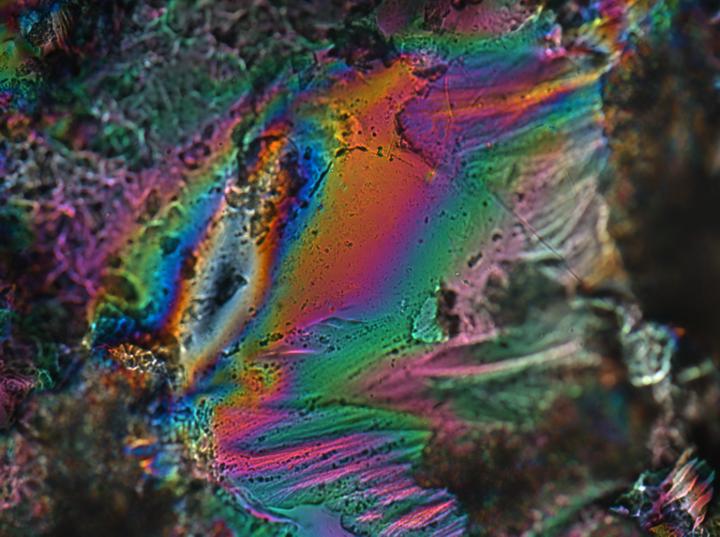Polymer puts new medical solutions within reach

The liquid crystalline hydrogel in a dry state. Credit: Patrick Mather
Liquid crystals are characterized as having the fluidity of liquid but some of the order of a crystal so they can be oriented to have structure. They are not water-loving, in that they will dissolve in water, making them less than ideal candidates for use inside the body.
Hydrogels, however, are water-loving but they lack the order to orient them into specific shapes.
Combining the properties of liquid crystals and hydrogels in just the right proportions creates the potential for new materials that have the same mechanical properties as soft tissues in the body. A material that is water-loving and has structure opens up the door the possibility for artificial blood vessels that are mechanically stealth so they wouldn't be viewed as a foreign body.
Professor Pat Mather has developed a process that can create this type of a polymer.
The paper “A hydrogel-forming liquid crystalline elastomer exhibiting soft shape memory” authored by Mather and graduate student Amir Torbati G'14, now a post-doc at UC Denver, was featured on the cover the Journal of Polymer Science B: Polymer Physics.
“It is a balancing act of not having too many water-loving groups in the polymer and balancing that with other chemicals in the polymer that promote structure.” said Mather.
Whatever the hydrogels do to make the liquid crystals water-loving destroys the order of crystallinity, so historically creating a material like this has been a challenge but Mather's process opens to the door to new medical applications that were previously out of reach.
###
To see the full article visit: http://onlinelibrary.
Media Contact
All latest news from the category: Materials Sciences
Materials management deals with the research, development, manufacturing and processing of raw and industrial materials. Key aspects here are biological and medical issues, which play an increasingly important role in this field.
innovations-report offers in-depth articles related to the development and application of materials and the structure and properties of new materials.
Newest articles

A universal framework for spatial biology
SpatialData is a freely accessible tool to unify and integrate data from different omics technologies accounting for spatial information, which can provide holistic insights into health and disease. Biological processes…

How complex biological processes arise
A $20 million grant from the U.S. National Science Foundation (NSF) will support the establishment and operation of the National Synthesis Center for Emergence in the Molecular and Cellular Sciences (NCEMS) at…

Airborne single-photon lidar system achieves high-resolution 3D imaging
Compact, low-power system opens doors for photon-efficient drone and satellite-based environmental monitoring and mapping. Researchers have developed a compact and lightweight single-photon airborne lidar system that can acquire high-resolution 3D…





















